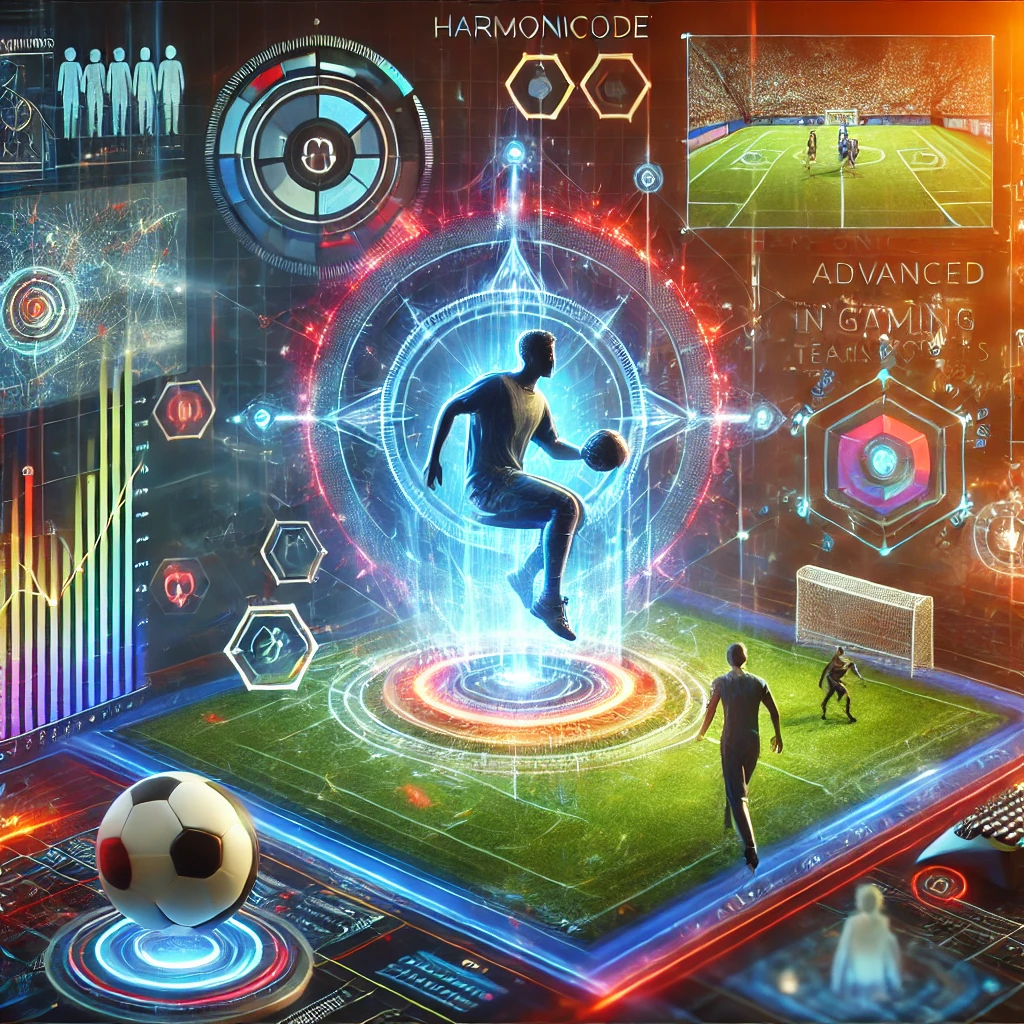In the dynamic world of digital technology, Harmonicode has emerged as a pioneering concept, encompassing a variety of domains such as gaming, sports, and team collaborations. At its core, Harmonicode symbolizes the seamless integration of technology, creativity, and collaboration to redefine traditional and digital experiences. This article delves into what Harmonicode represents across various facets, including Harmonicode games, sports Harmonicode, Harmonicode gaming, Harmonicode teams, and video games Harmonicode.
1. What is Harmonicode?
Harmonicode is a conceptual framework that merges cutting-edge technology with user engagement to create immersive and harmonious experiences. It blends principles of game design, artificial intelligence, and interactive platforms to cater to the evolving demands of digital entertainment and sports industries.
The name “Harmonicode” suggests a harmony of code, symbolizing balance between technology and human interaction, creativity, and practicality.
2. Harmonicode Games
Harmonicode games refer to digital or virtual games developed under the Harmonicode concept. These games are characterized by:
- Advanced AI Integration: Games adapt dynamically to the player’s skills, ensuring a balanced and challenging experience.
- Interactive Environments: Players interact with realistic worlds powered by physics engines and AI-enhanced characters.
- Cross-Platform Play: These games work seamlessly across devices, from PCs to VR headsets, ensuring accessibility.
Examples:
- Strategy games where AI evolves based on player tactics.
- RPGs (Role-Playing Games) that personalize stories and quests.
3. Sports Harmonicode
Sports Harmonicode takes the principles of Harmonicode and applies them to physical and virtual sports environments. It enhances:
- Player Performance Tracking: Wearable tech powered by Harmonicode analyzes an athlete’s movements, optimizing training.
- E-Sports Integration: Virtual tournaments use Harmonicode frameworks to create realistic simulations of physical sports.
- Fan Engagement: Holographic displays and augmented reality allow fans to interact with players in innovative ways.
Applications:
- Smart stadiums with Harmonicode systems for real-time analytics.
- Training programs tailored to individual athletes.
4. Harmonicode Gaming
Harmonicode gaming represents a shift in the traditional gaming paradigm. This includes:
- Immersive Experiences: Virtual Reality (VR) and Augmented Reality (AR) are central to creating hyper-realistic gaming worlds.
- Collaborative Gaming: Multiplayer environments foster teamwork and strategy using AI-powered matchmaking systems.
- Educational Applications: Games designed with Harmonicode principles often incorporate learning elements, teaching players new skills while they play.
5. Harmonicode Teams
Harmonicode teams refer to groups formed within the gaming or sports ecosystem, leveraging Harmonicode technologies for collaboration and performance:
- E-Sports Teams: Competitive gaming squads use AI-driven strategies for training and matches.
- Professional Sports Teams: Harmonicode helps analyze performance metrics and strategize gameplay.
- Development Teams: Game developers and designers utilize Harmonicode frameworks to build innovative projects.
Key Features:
- AI-powered analytics for decision-making.
- Enhanced communication tools for better collaboration.
6. Video Games Harmonicode
Video games Harmonicode signifies the next generation of digital gaming. These games are characterized by:
- Adaptive Storylines: Narratives change based on player actions, offering unique playthroughs.
- Blockchain Integration: Ownership of in-game assets is secured using blockchain technology.
- Social Interaction: Harmonicode video games prioritize community building through shared experiences.
7. Advantages of Harmonicode
- Innovation: Combines AI, AR, and VR for groundbreaking advancements.
- Personalization: Adapts to individual user needs, offering unique experiences.
- Collaboration: Facilitates teamwork in both gaming and sports.
8. Disadvantages of Harmonicode
- Accessibility: Advanced tech can make it costly for some users.
- Complexity: Integration of multiple technologies may pose challenges for developers.
- Data Privacy: Extensive data collection might lead to security concerns.
9. Applications of Harmonicode
- Gaming: Revolutionizing video games with personalized and interactive gameplay.
- Sports: Enhancing training, performance, and audience engagement.
- Education: Gamified learning for skill development.
- Healthcare: Interactive systems for rehabilitation and fitness tracking.
10. Significance of Harmonicode
Harmonicode represents a leap toward the future of technology-driven human experiences. By blending innovation with accessibility, it bridges the gap between imagination and reality, reshaping industries and user interactions.
11. Unique Insights about Harmonicode
- Cross-Industry Adoption: Harmonicode is not limited to gaming; its principles can be applied to education, healthcare, and business.
- Community-Driven: The technology fosters collaboration among users, developers, and professionals.
- Ethical AI Use: Harmonicode emphasizes responsible AI usage, ensuring ethical practices.
12. FAQs
Q1: What is the primary goal of Harmonicode?
To harmonize technology with user experiences, creating interactive and immersive systems across various industries.
Q2: How does Harmonicode impact gaming?
It introduces adaptive AI, immersive environments, and personalized experiences, revolutionizing traditional gameplay.
Q3: Is Harmonicode limited to digital environments?
No, Harmonicode is also applied in physical settings like sports and fitness training.
Q4: Can small businesses utilize Harmonicode?
Yes, small businesses can leverage Harmonicode for analytics, gamified customer engagement, and innovative solutions.
13. Conclusion
Harmonicode is more than just a concept; it’s a transformative approach that blends technology, creativity, and user engagement. From enhancing video games to redefining sports and fostering collaboration in teams, Harmonicode is shaping the future of how we interact with technology. Its potential applications are vast, and its impact on gaming, sports, and beyond is only just beginning

